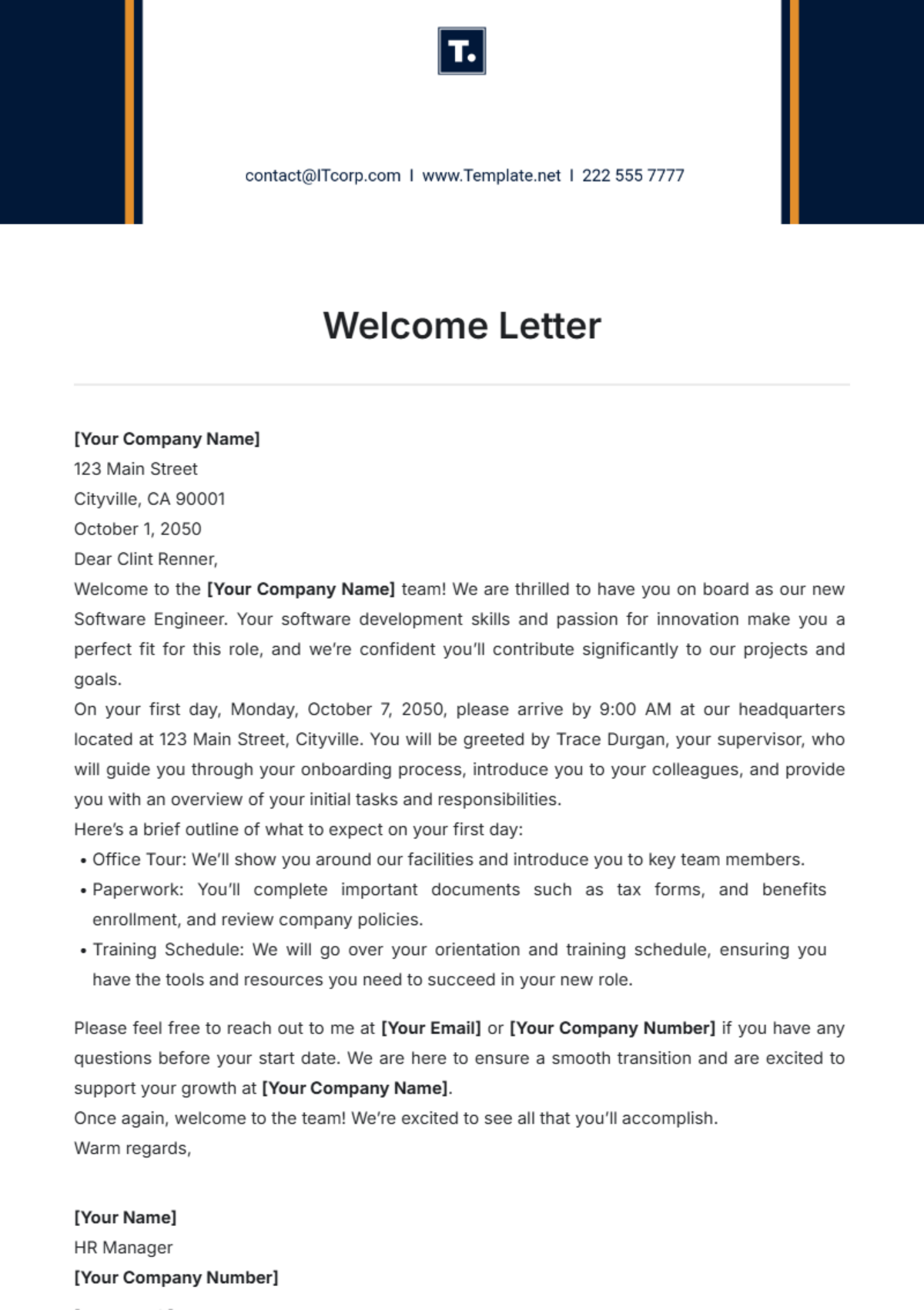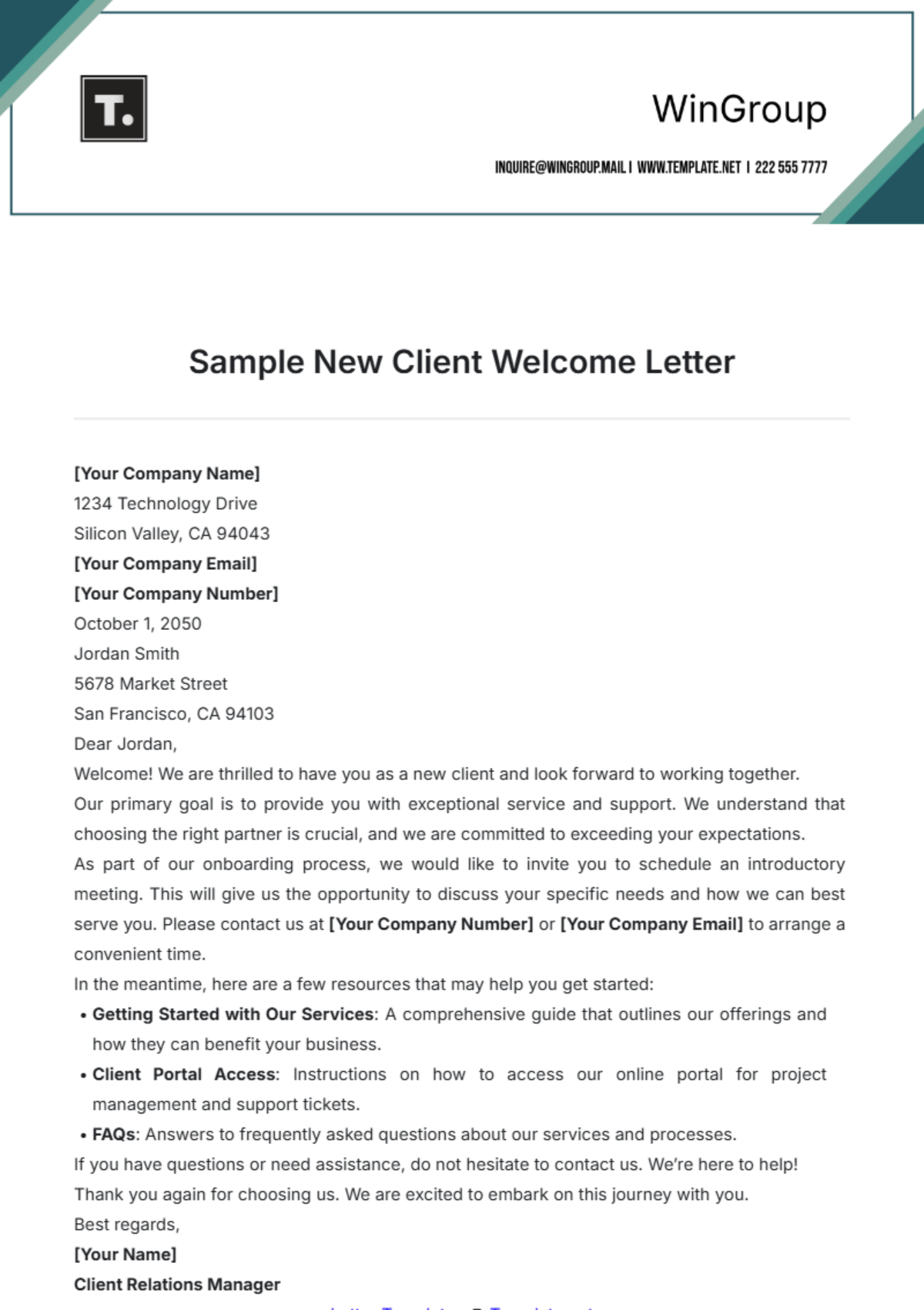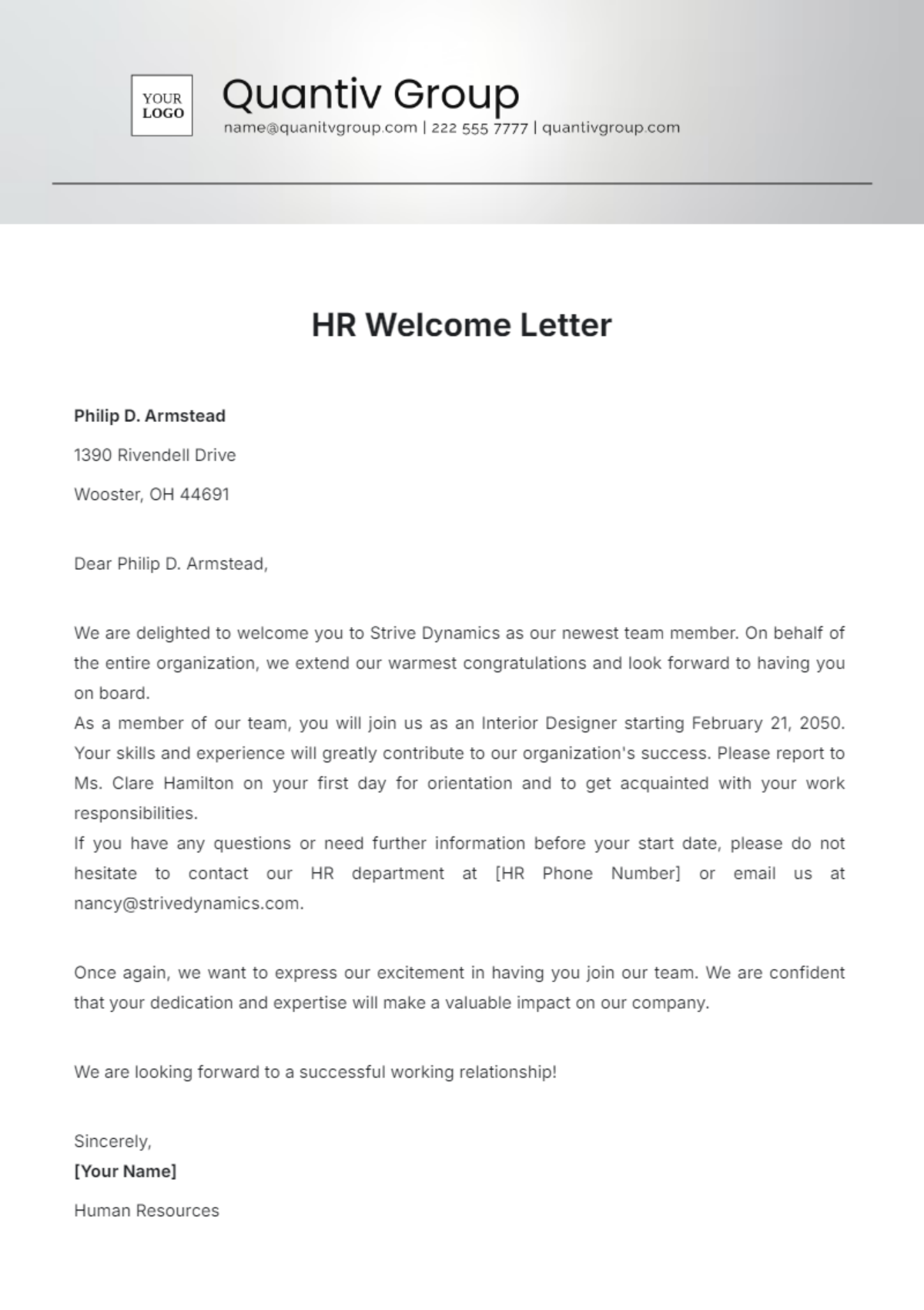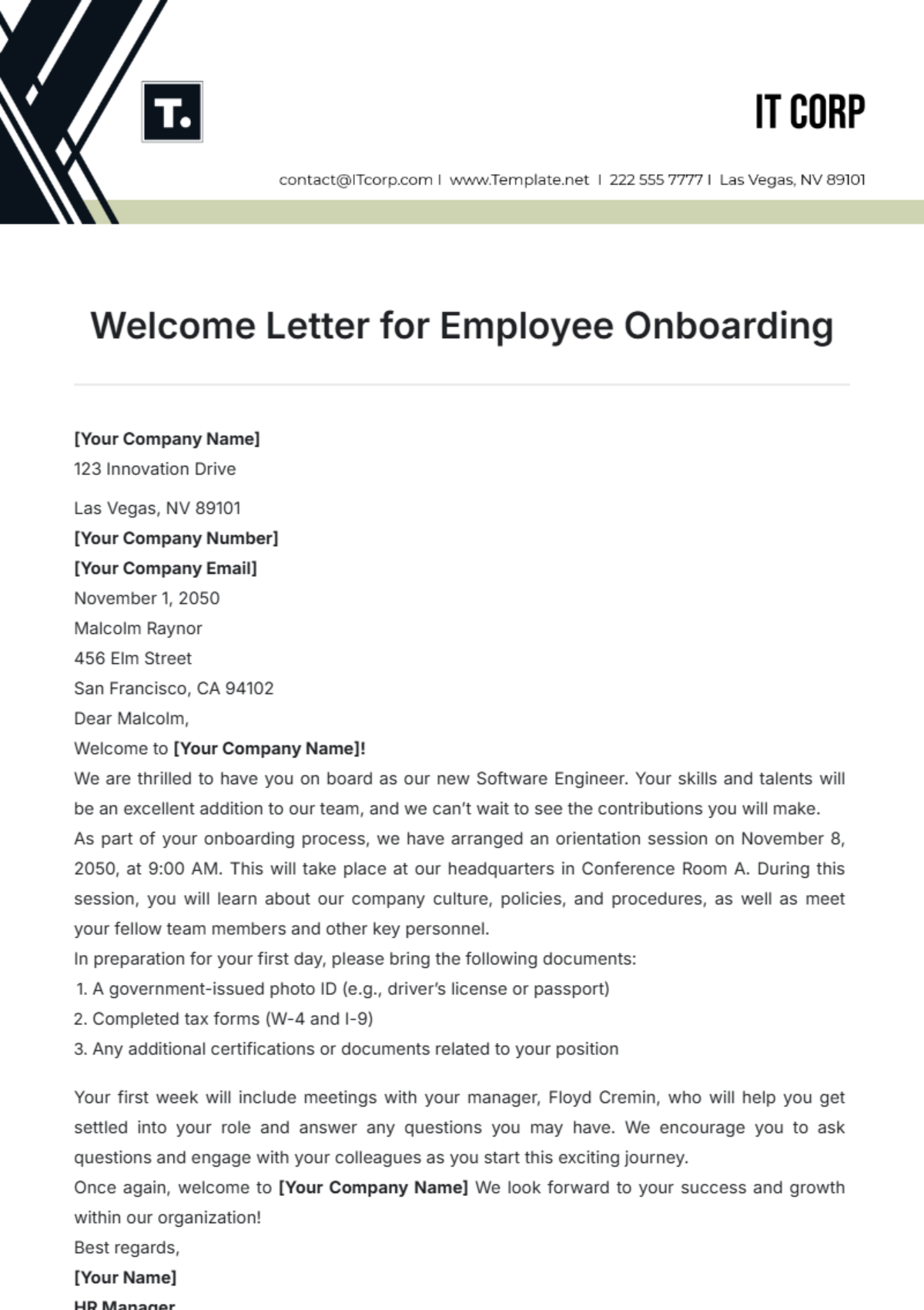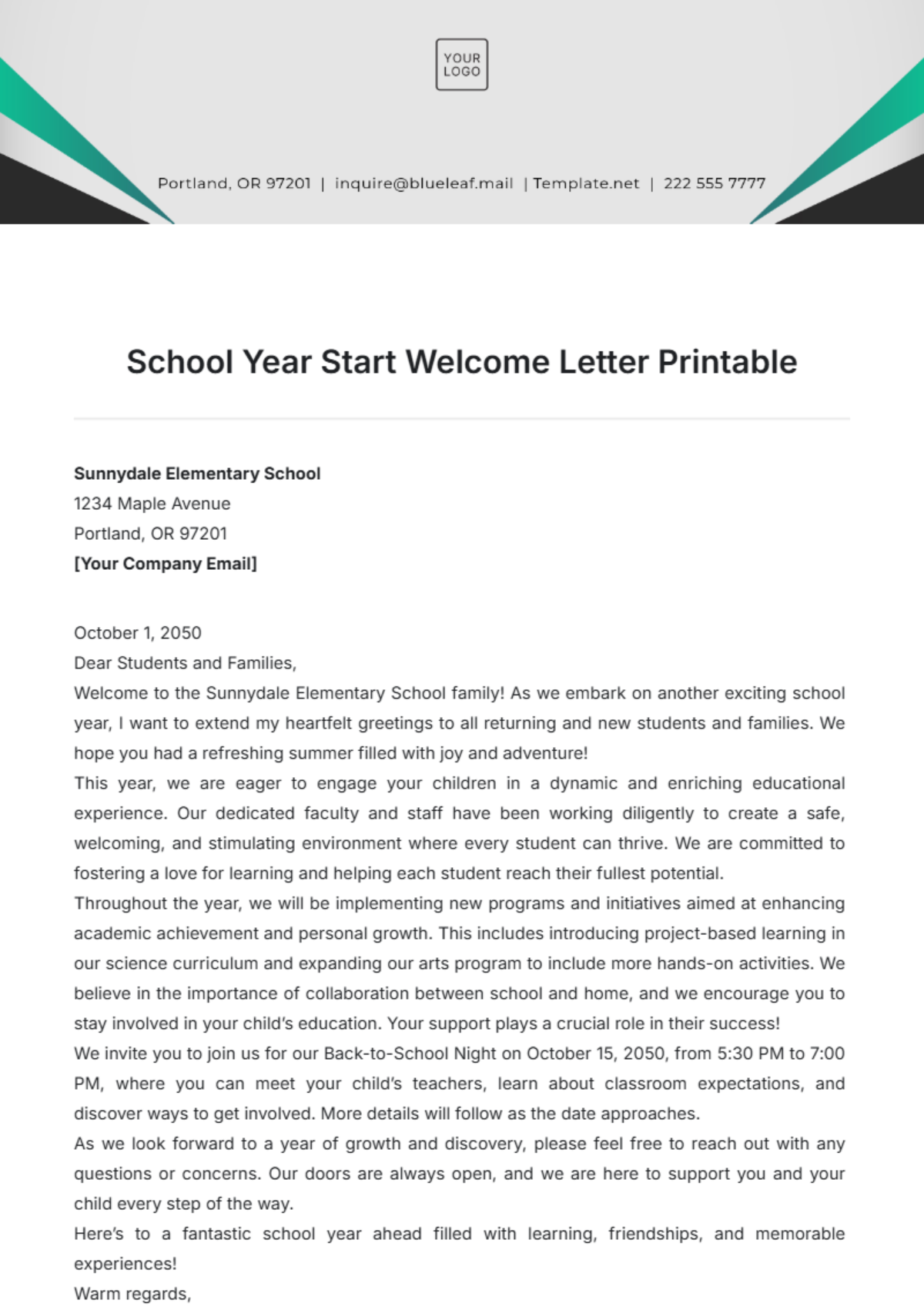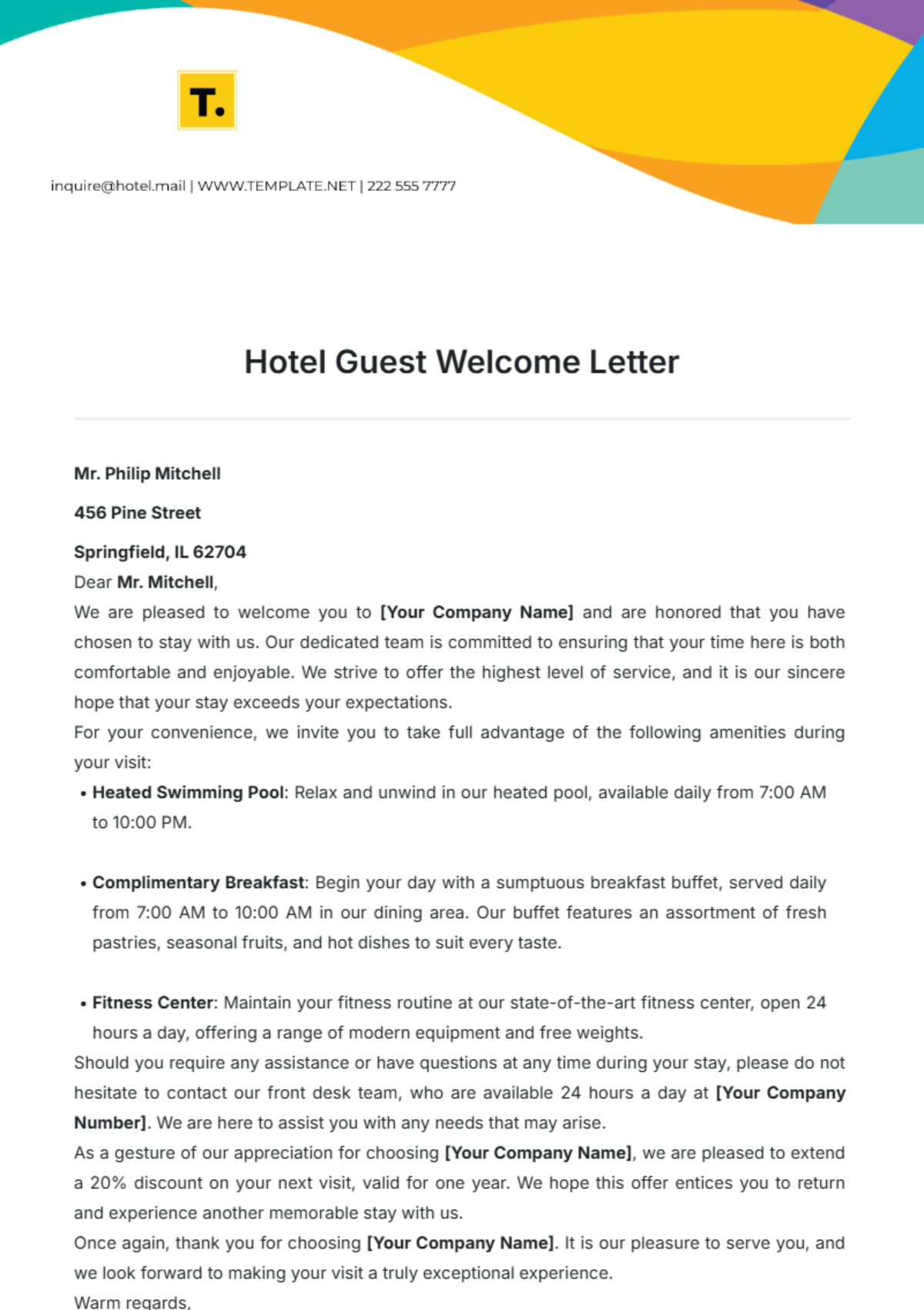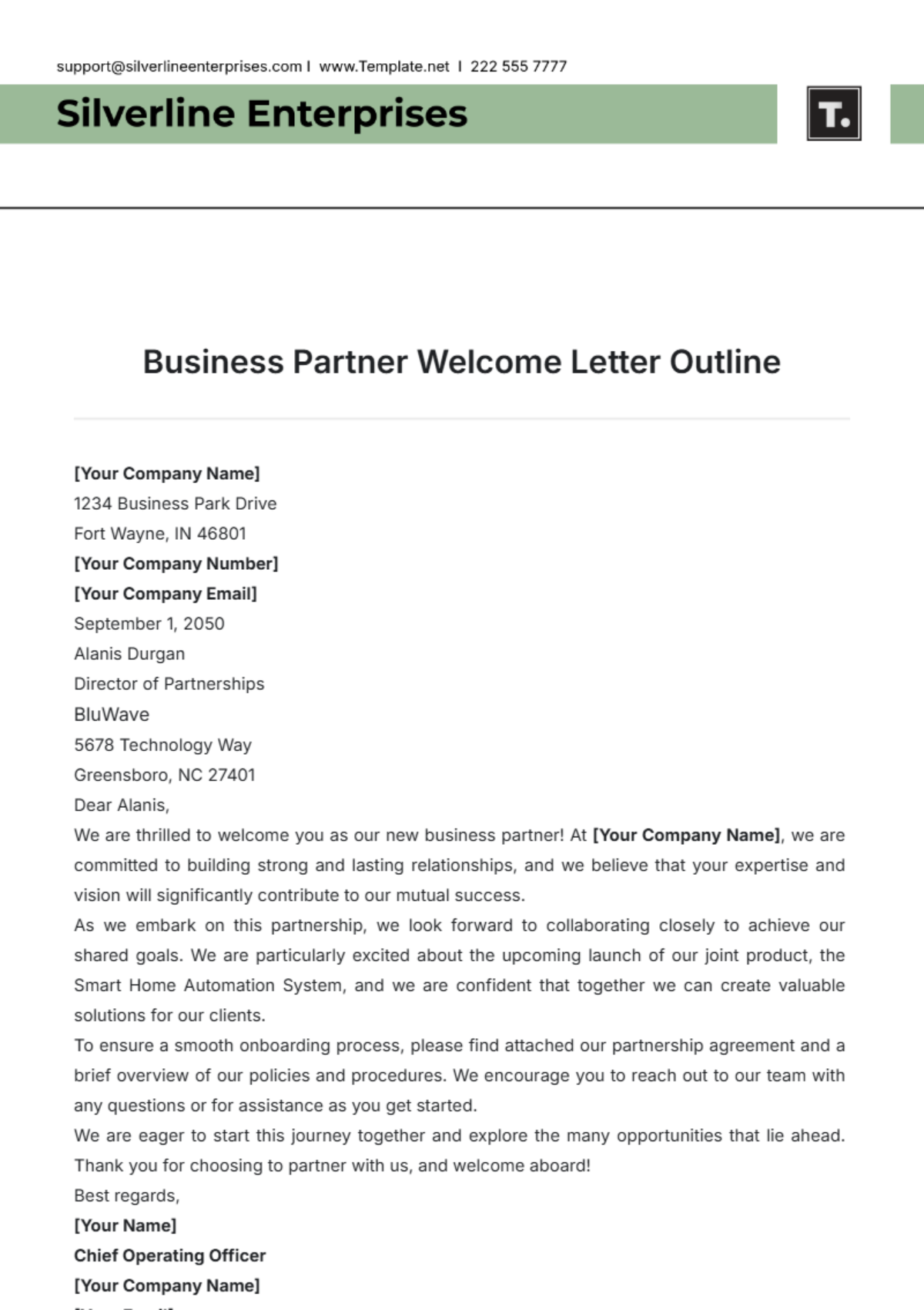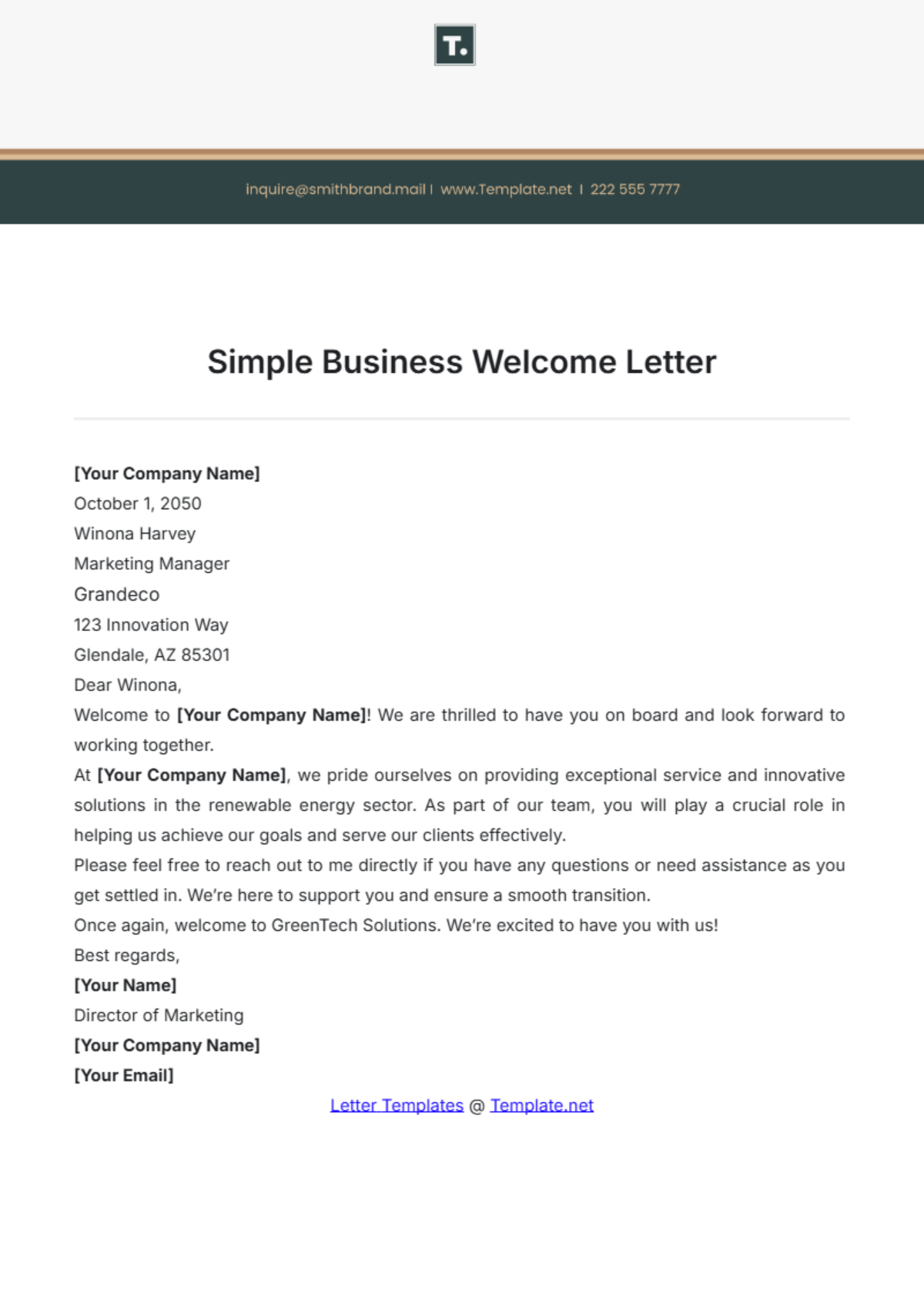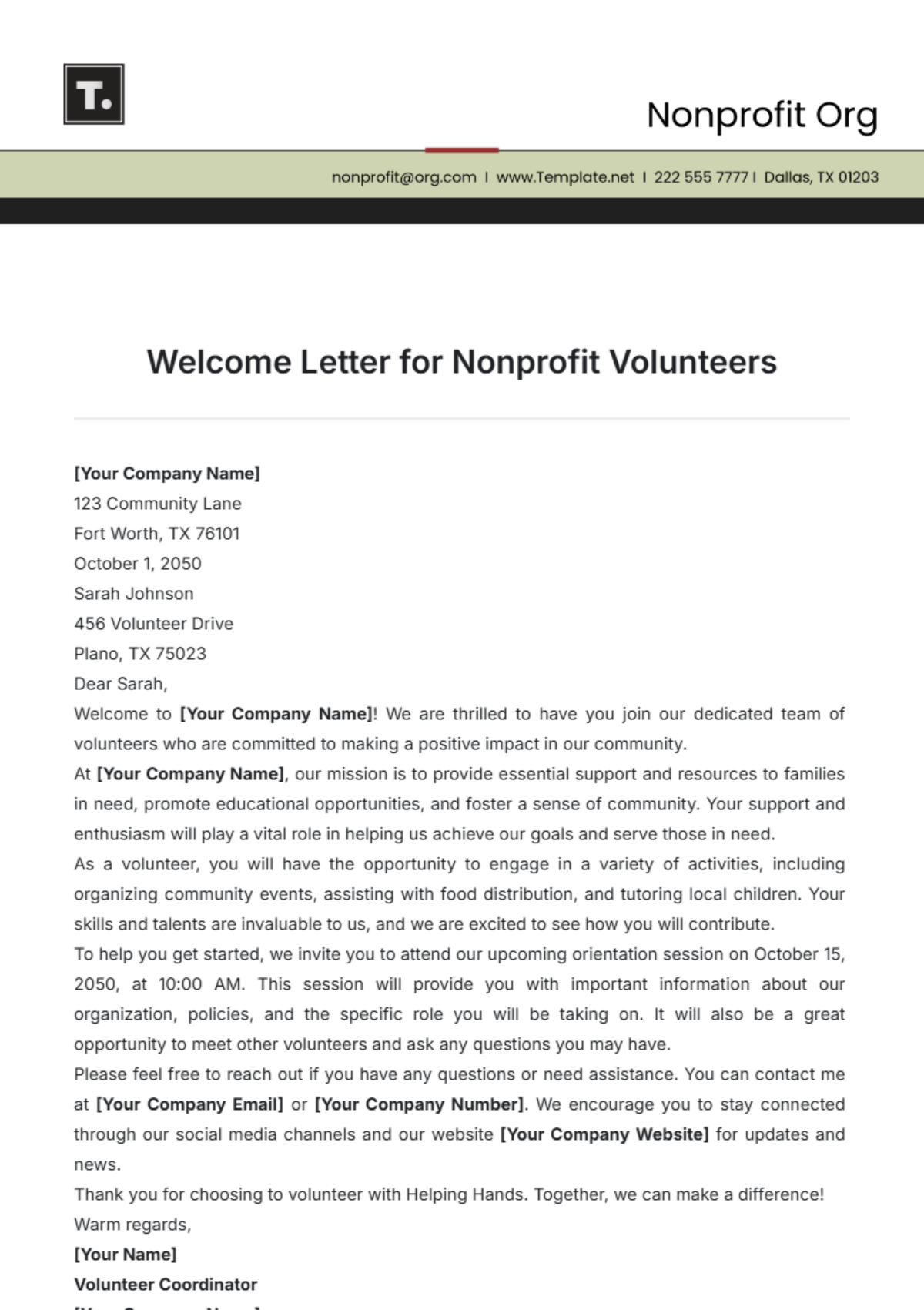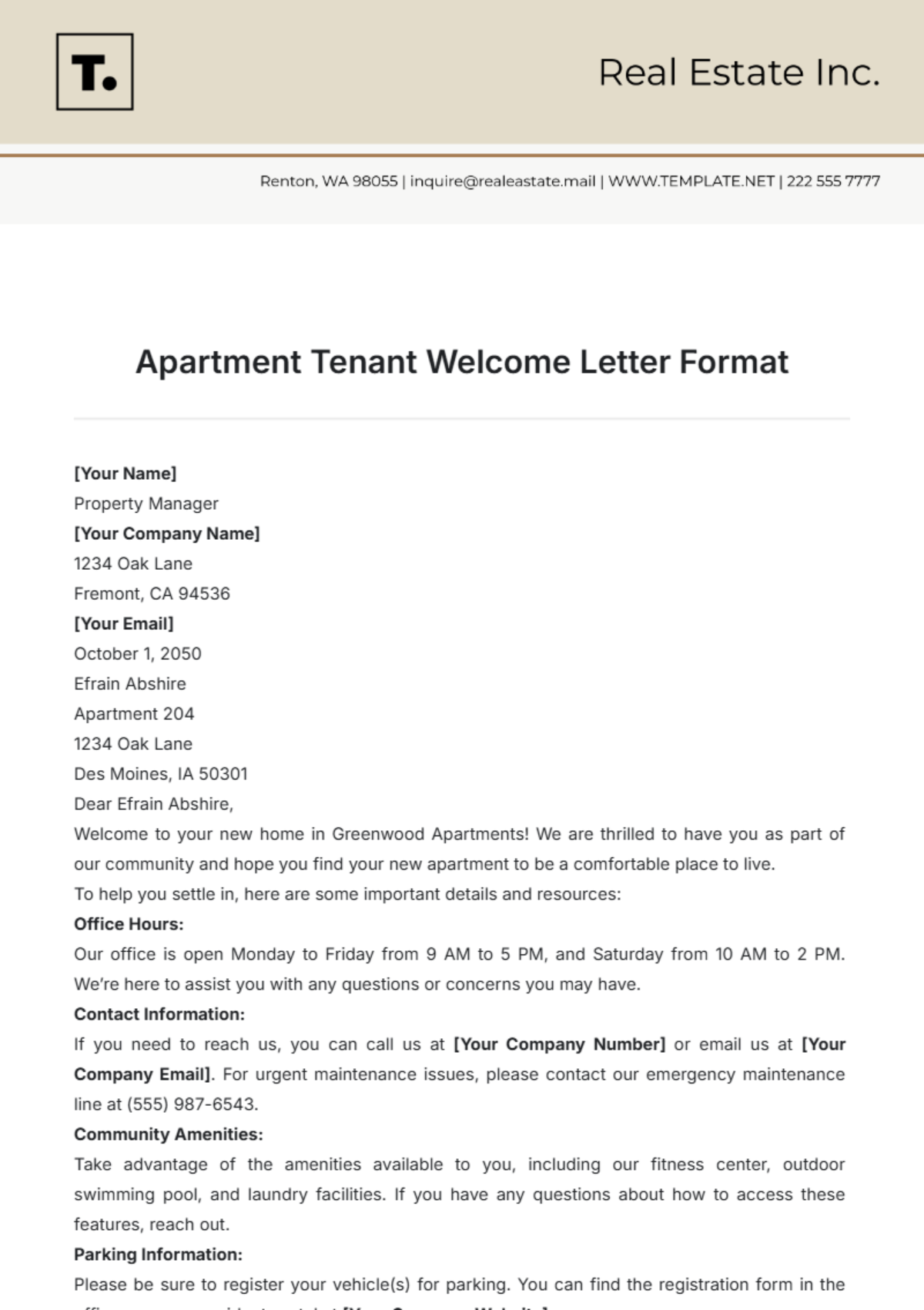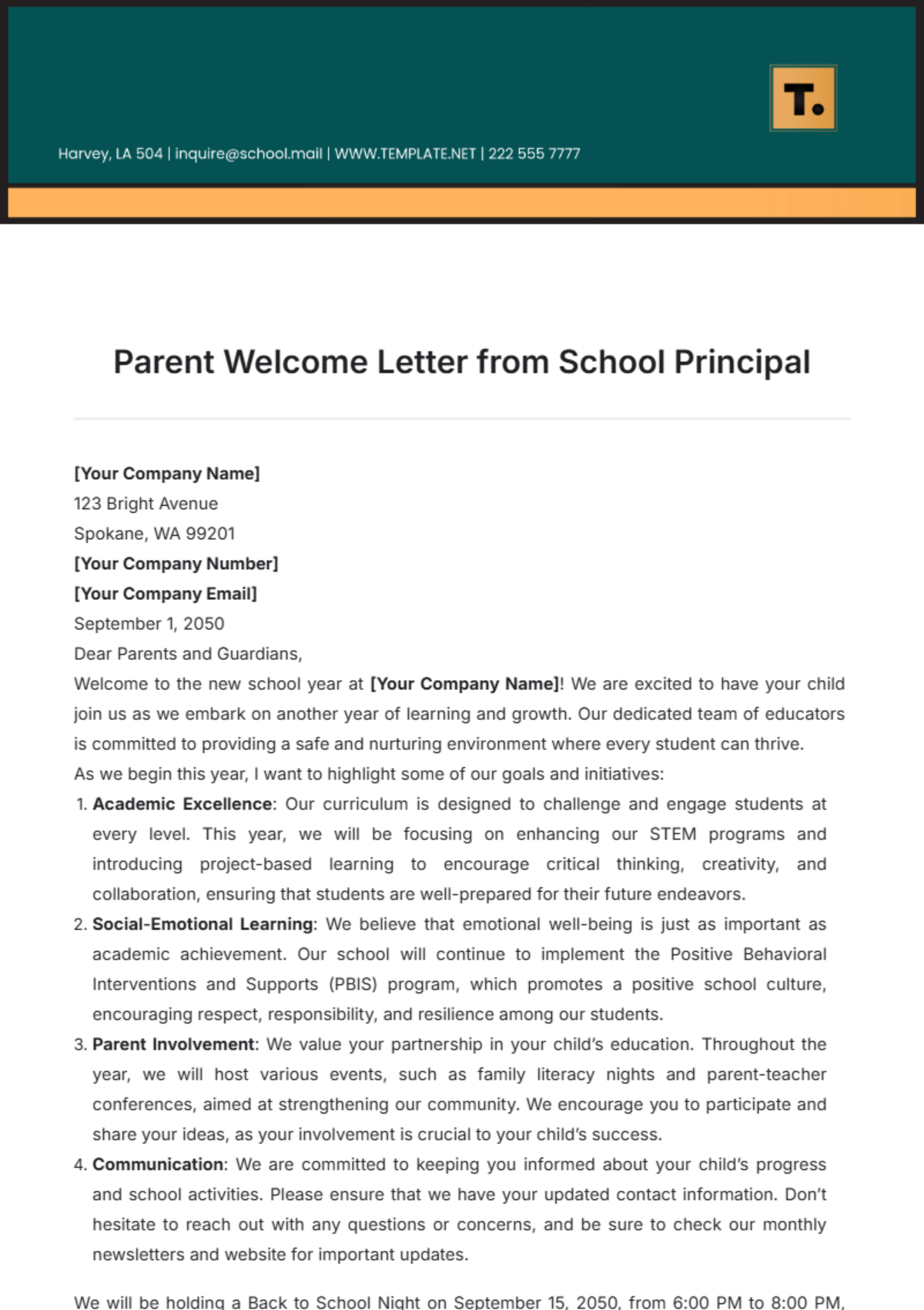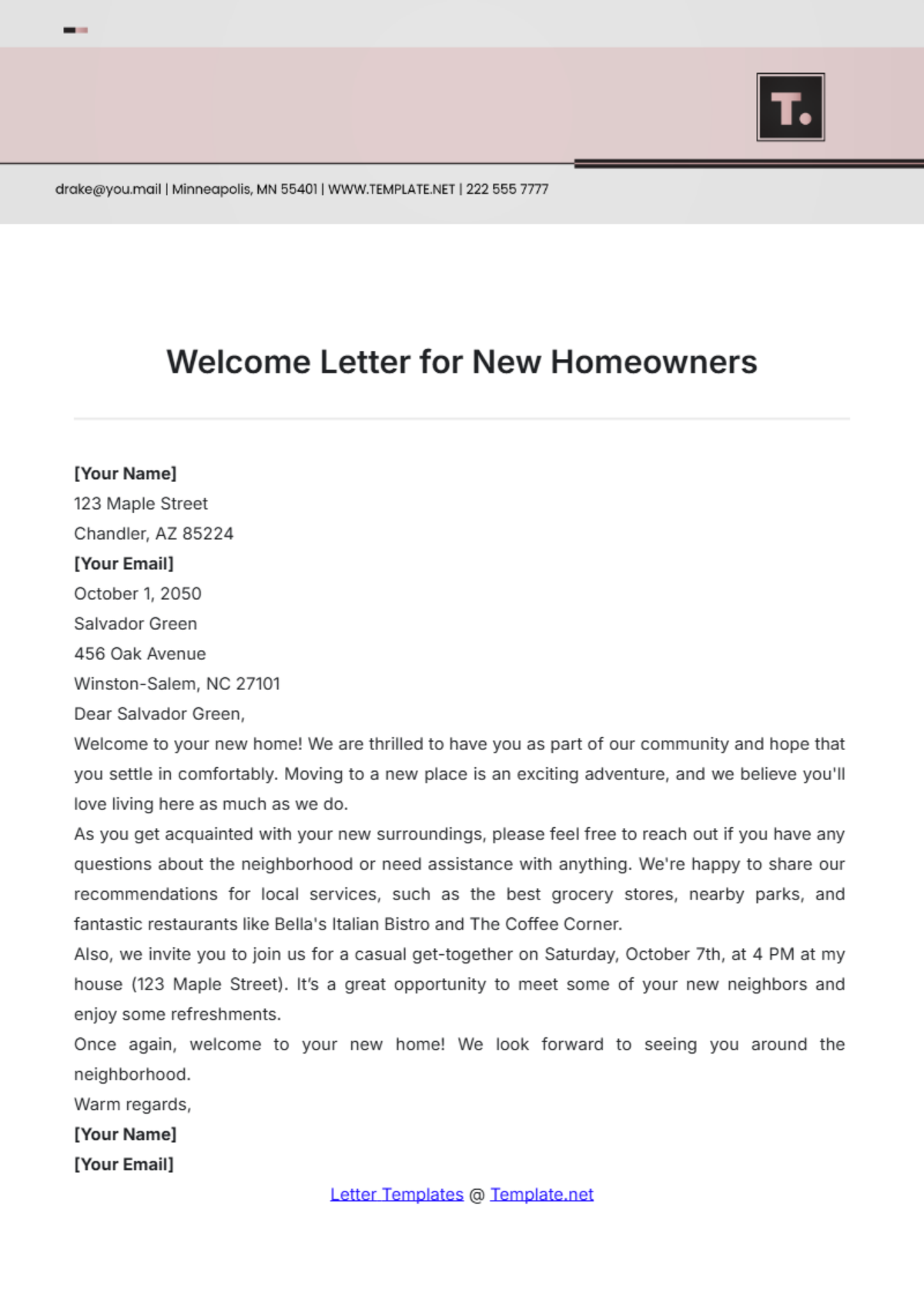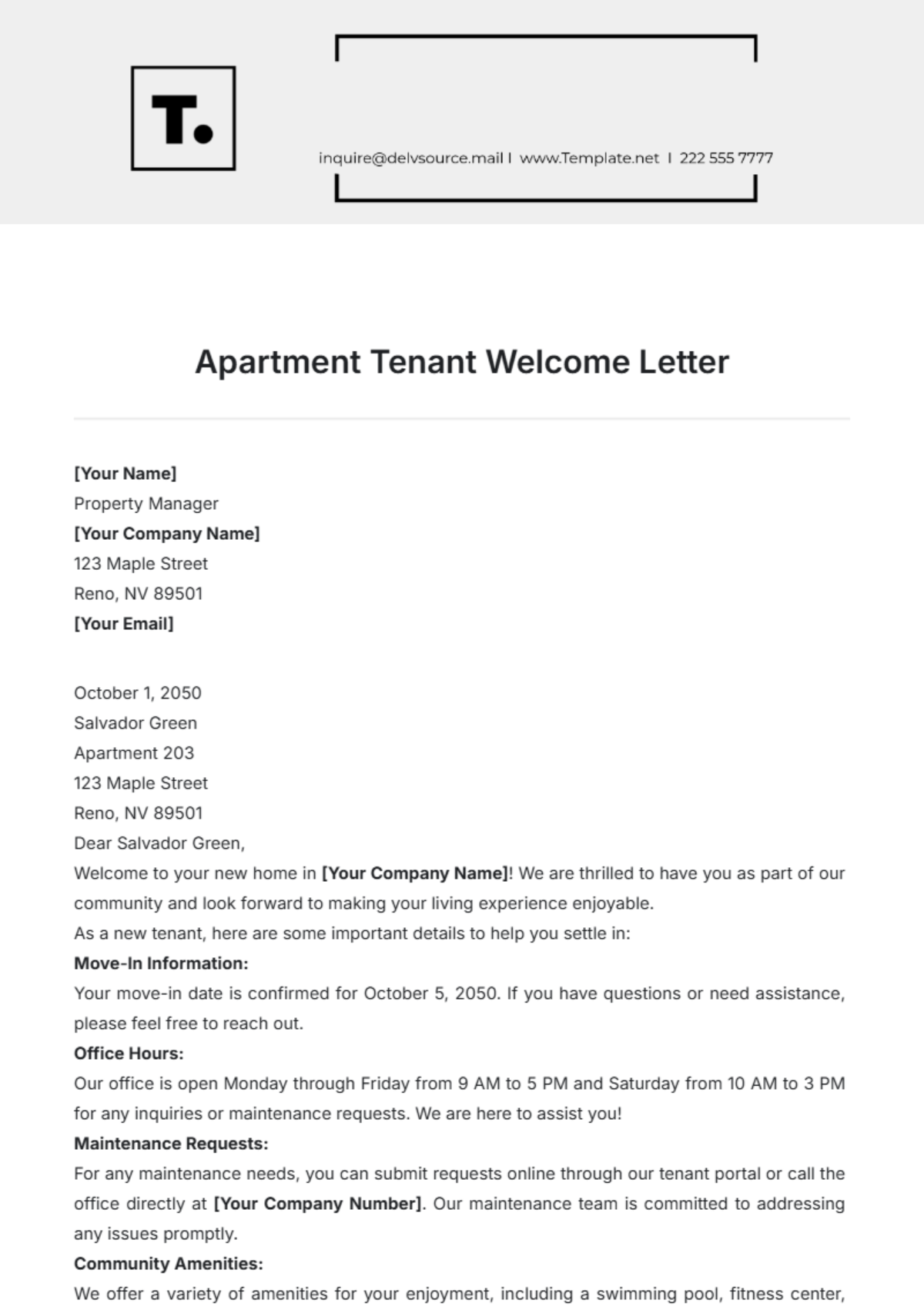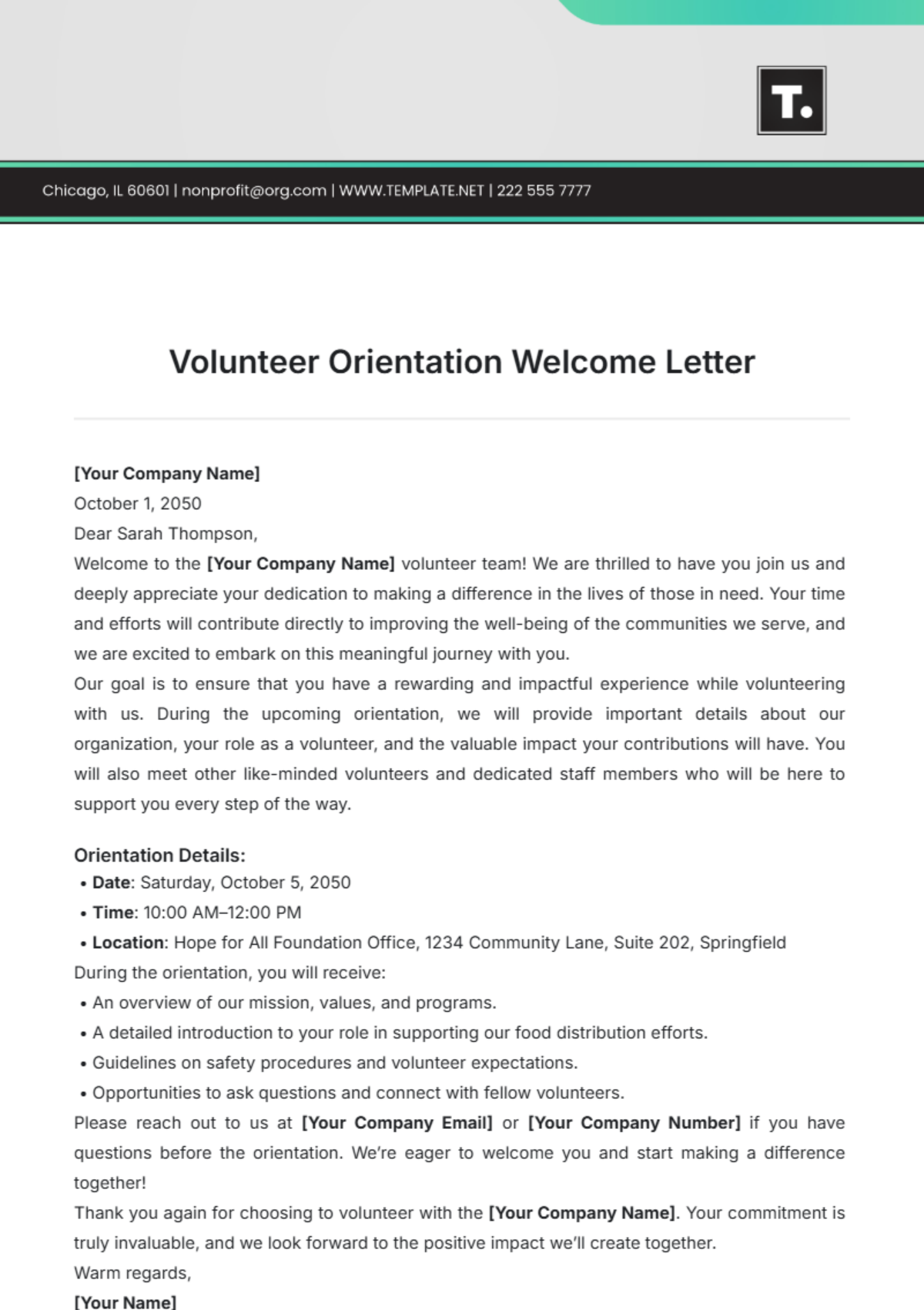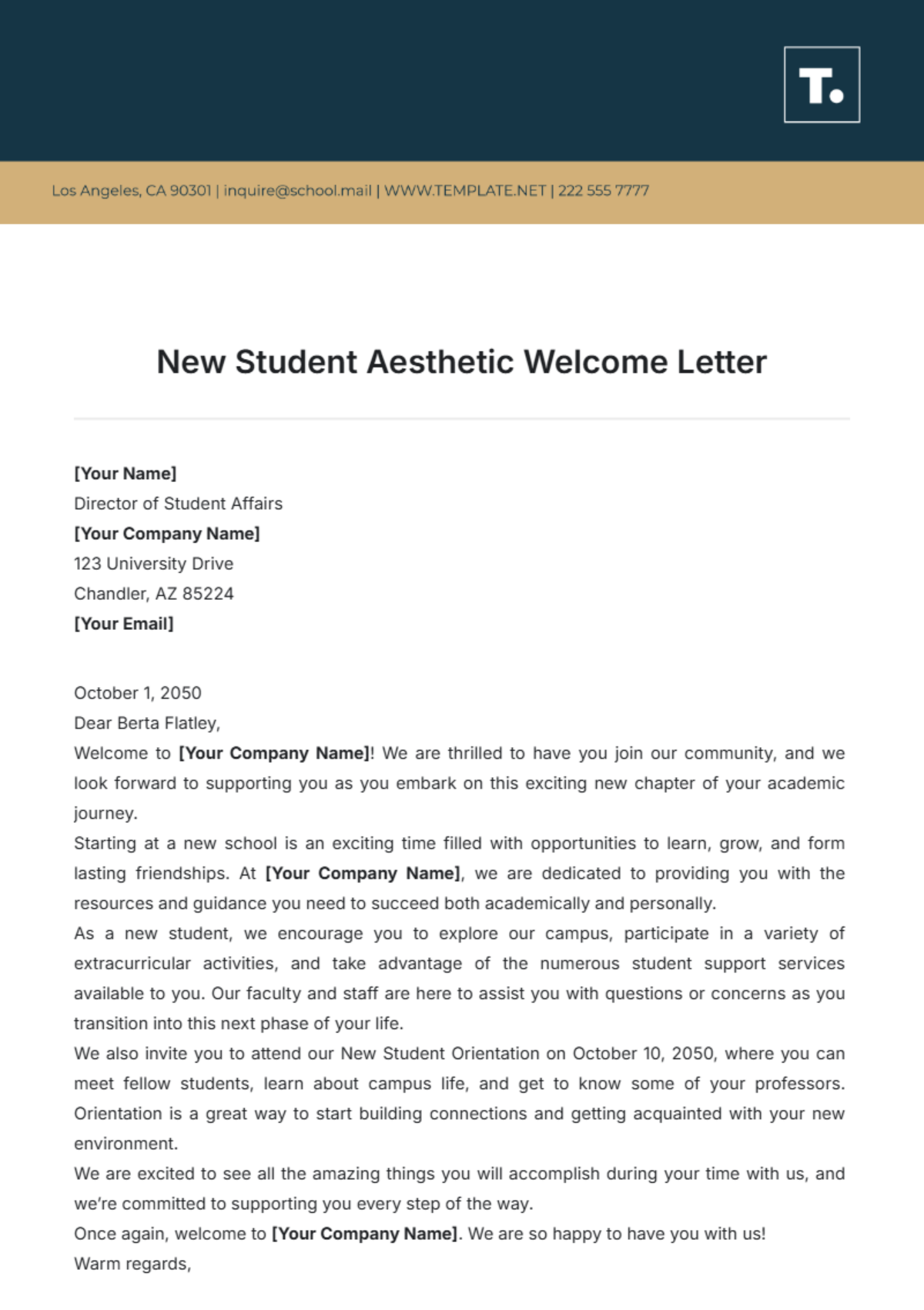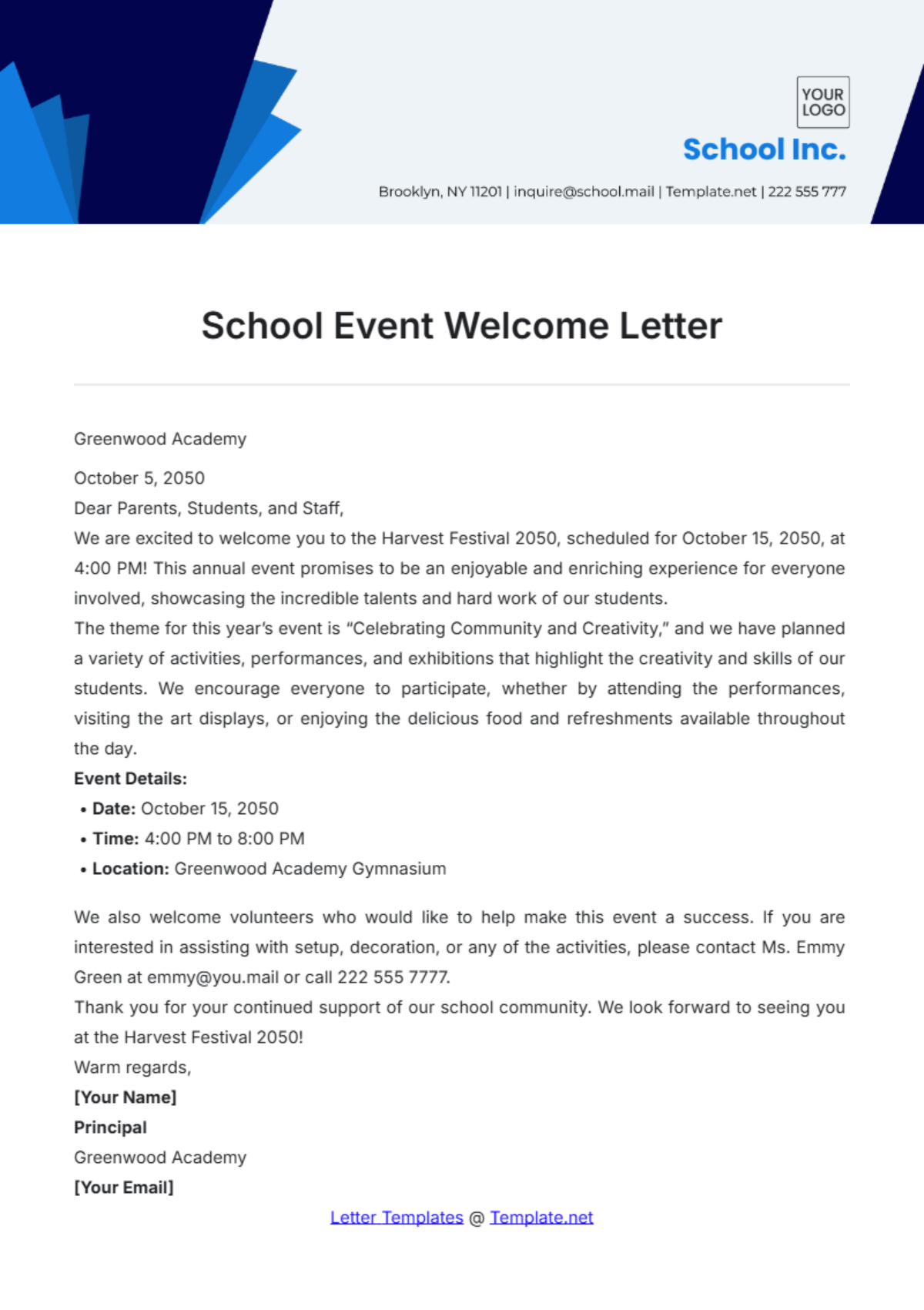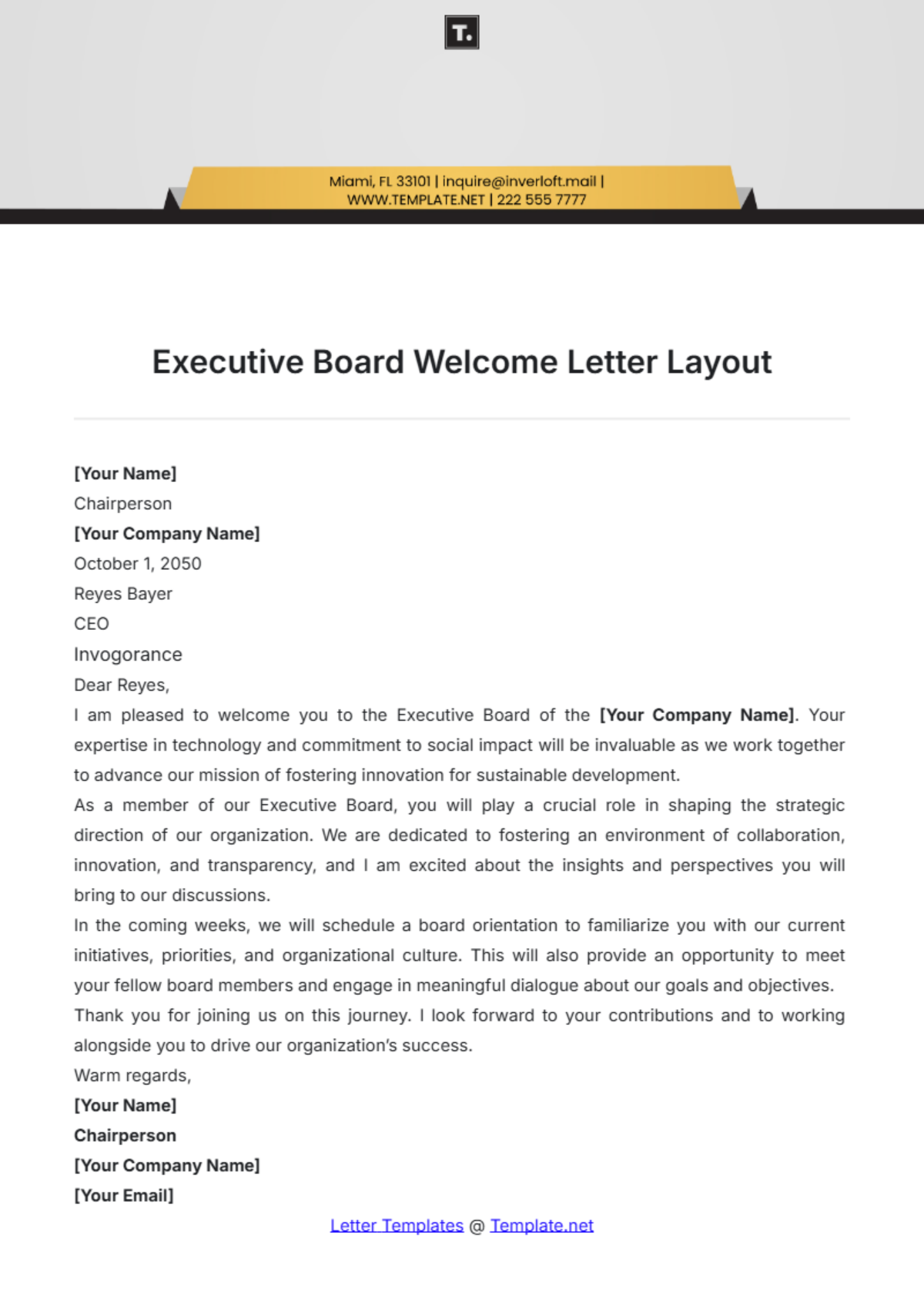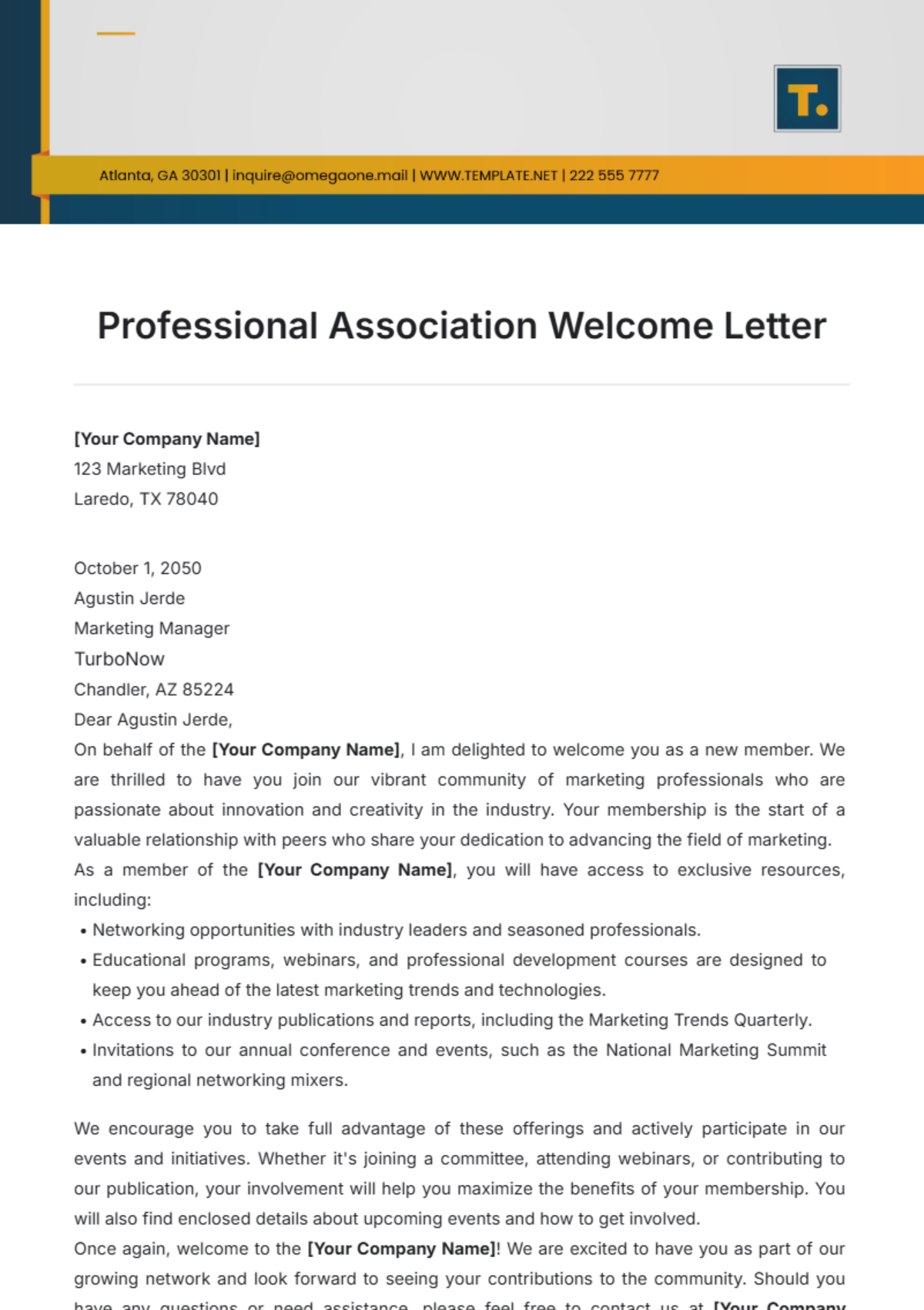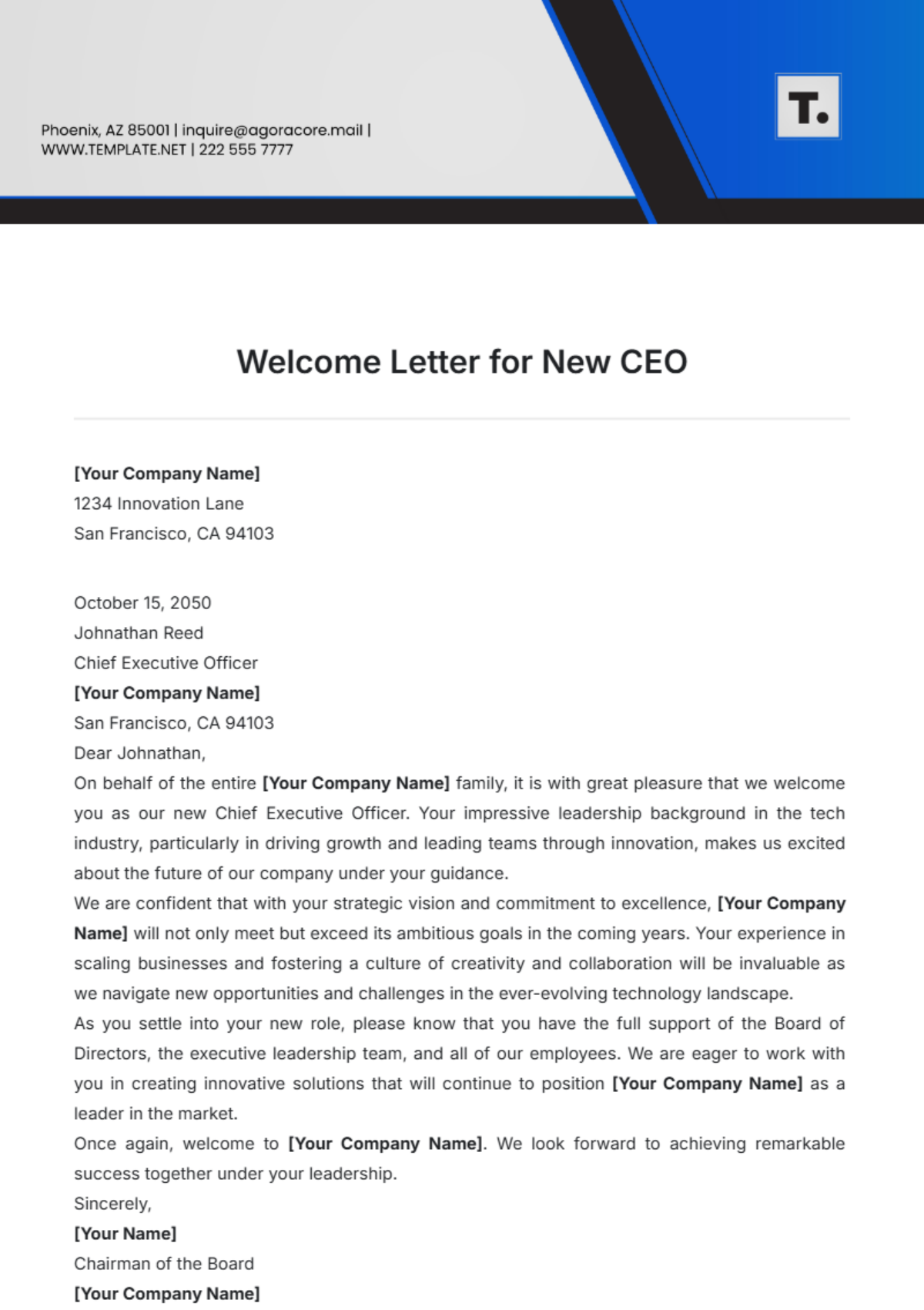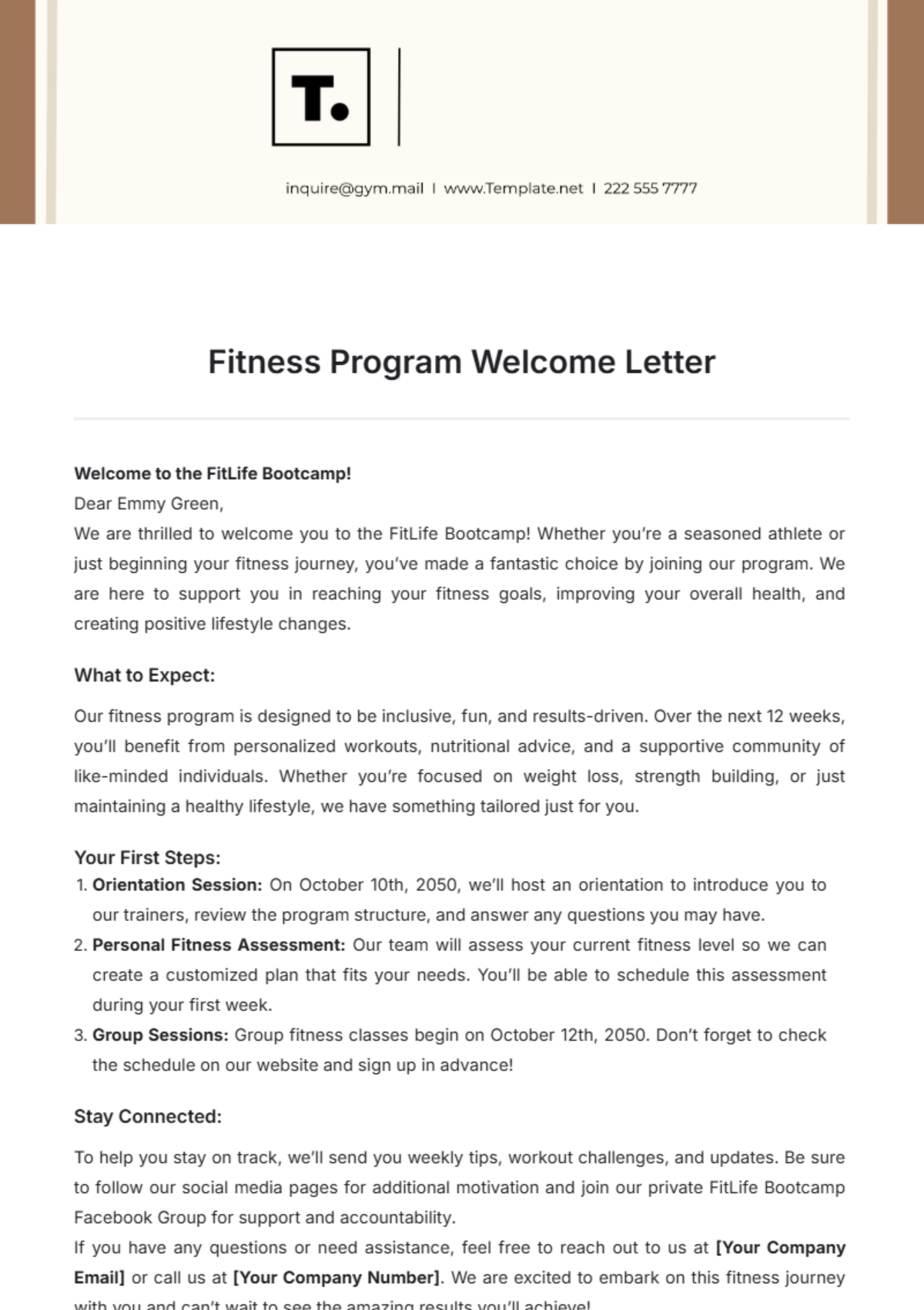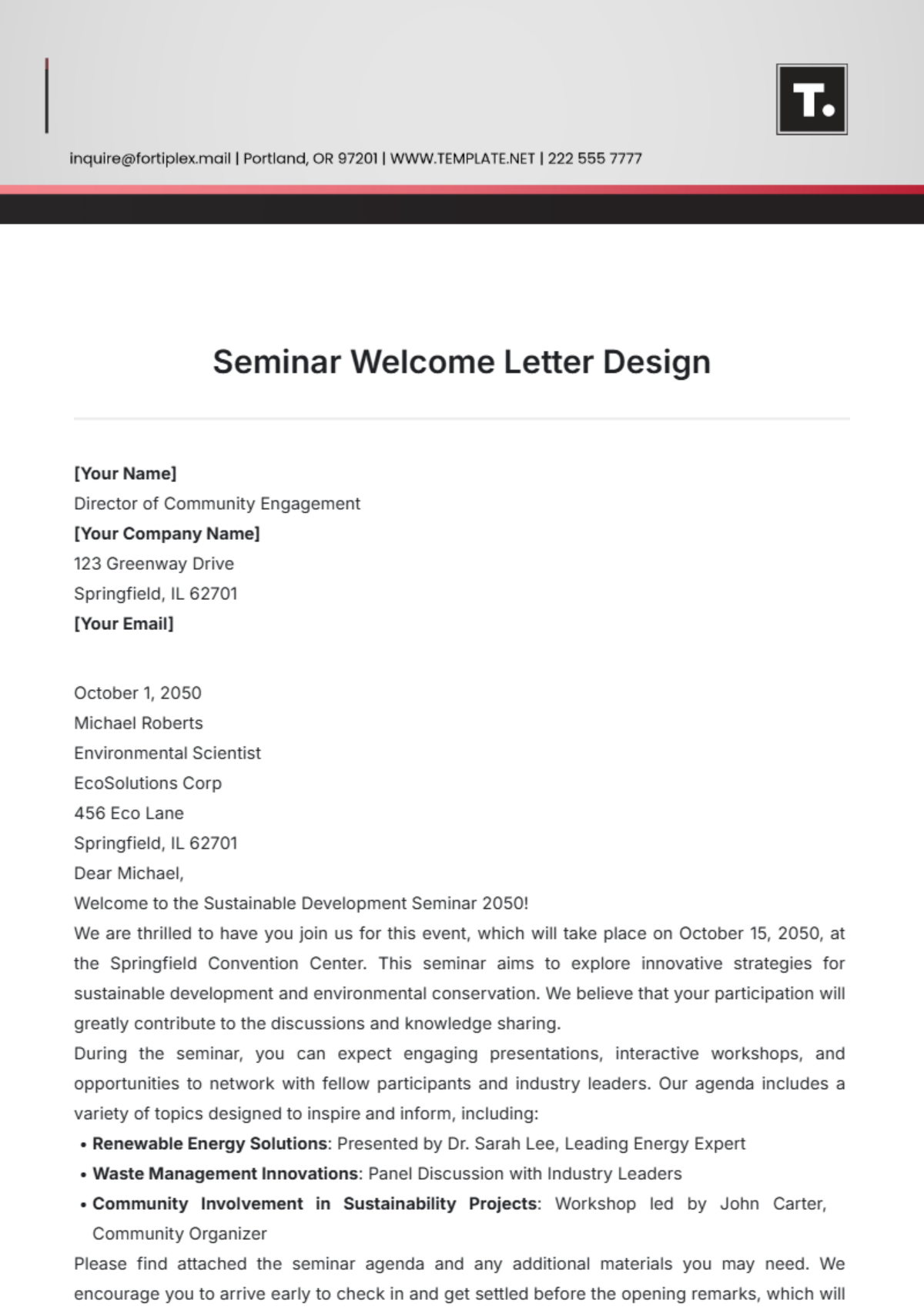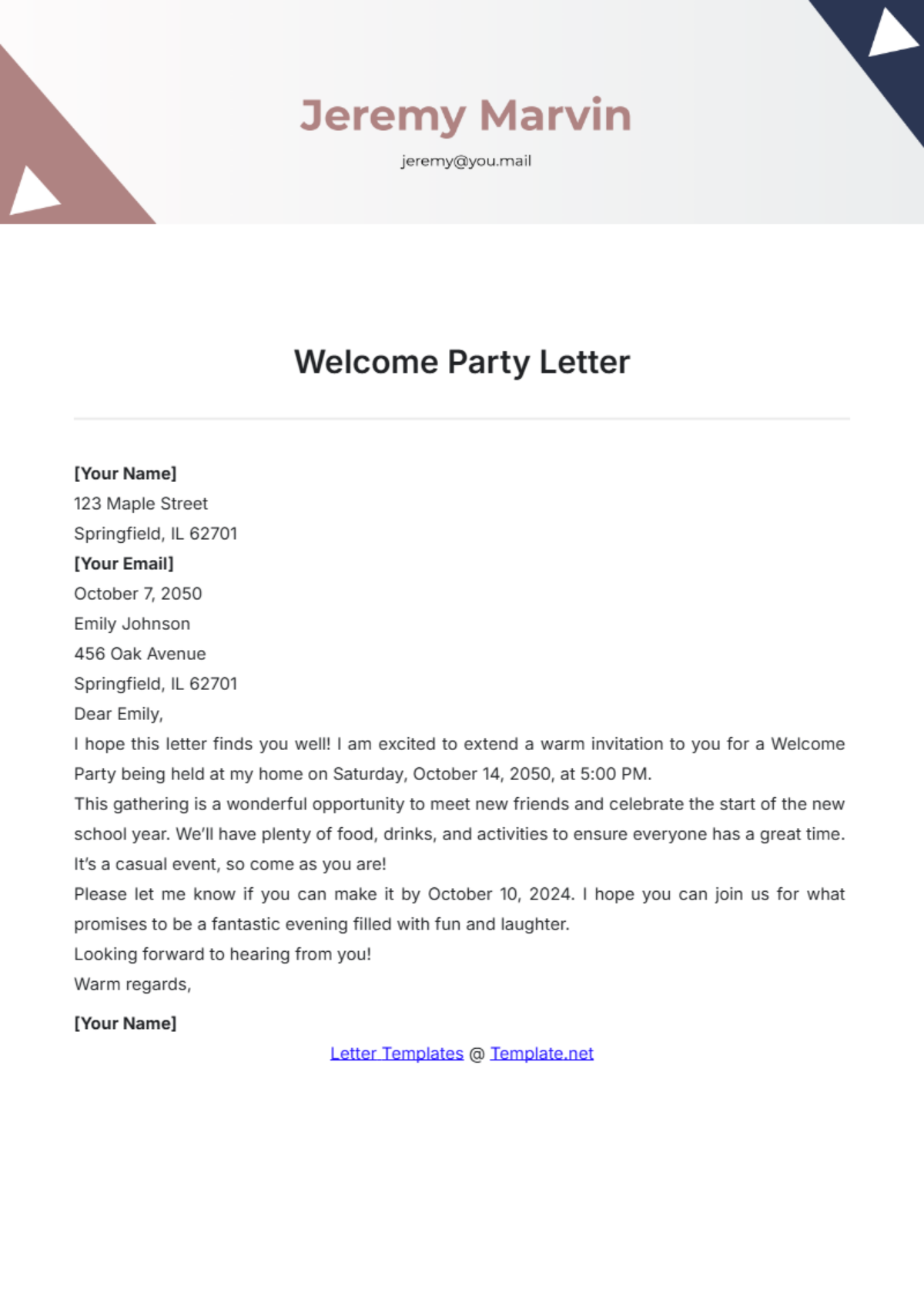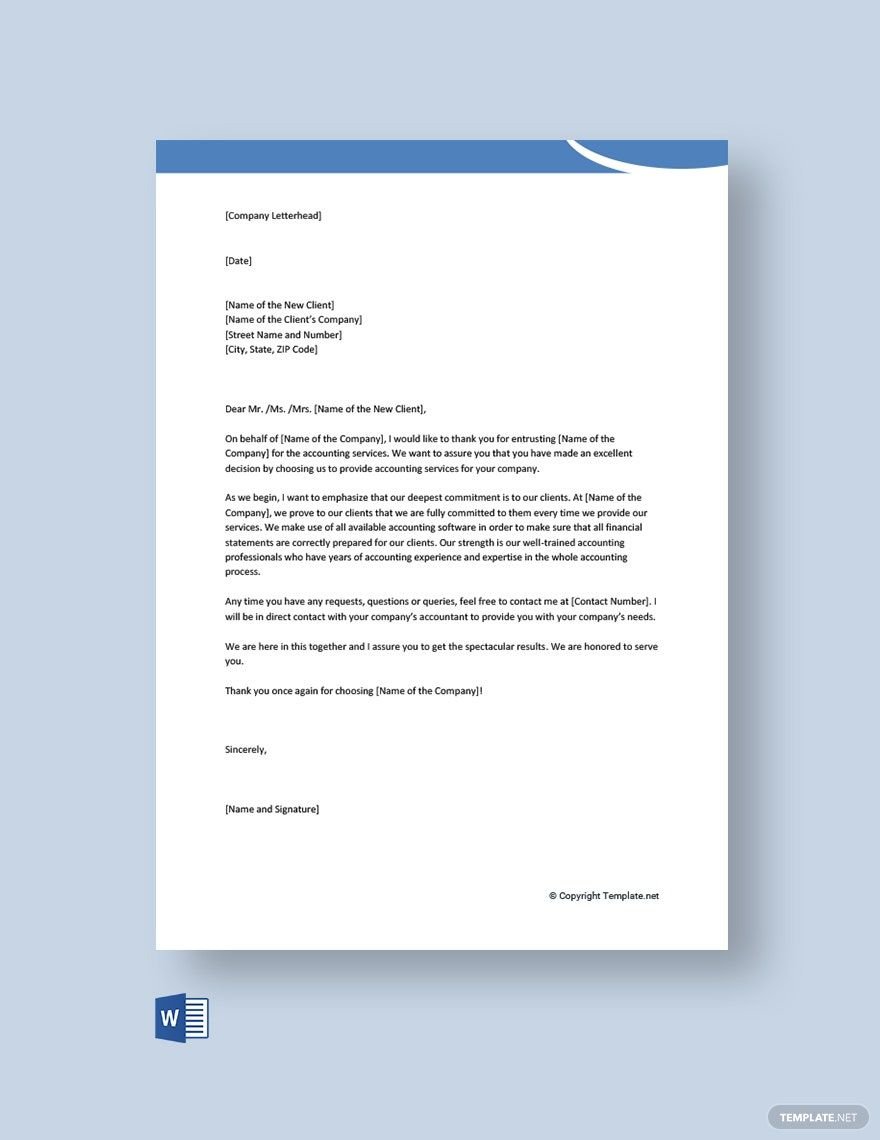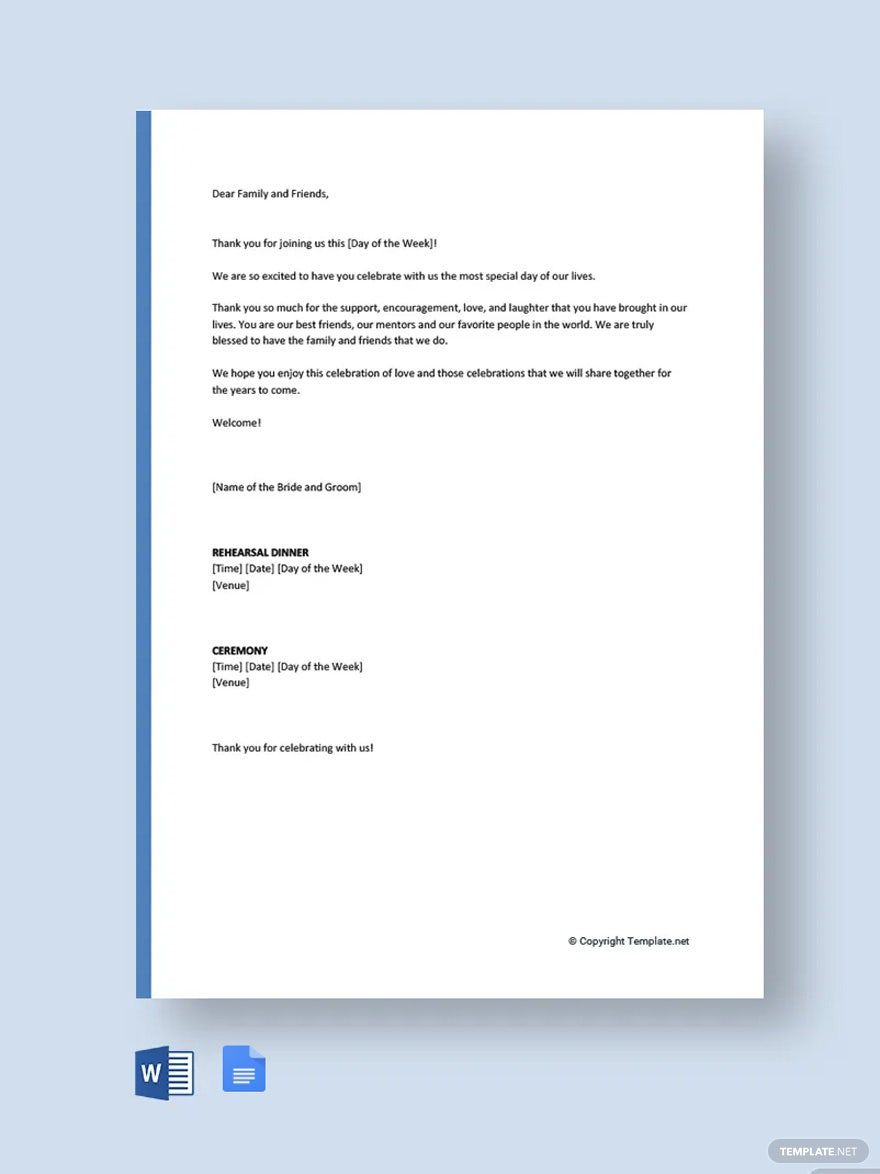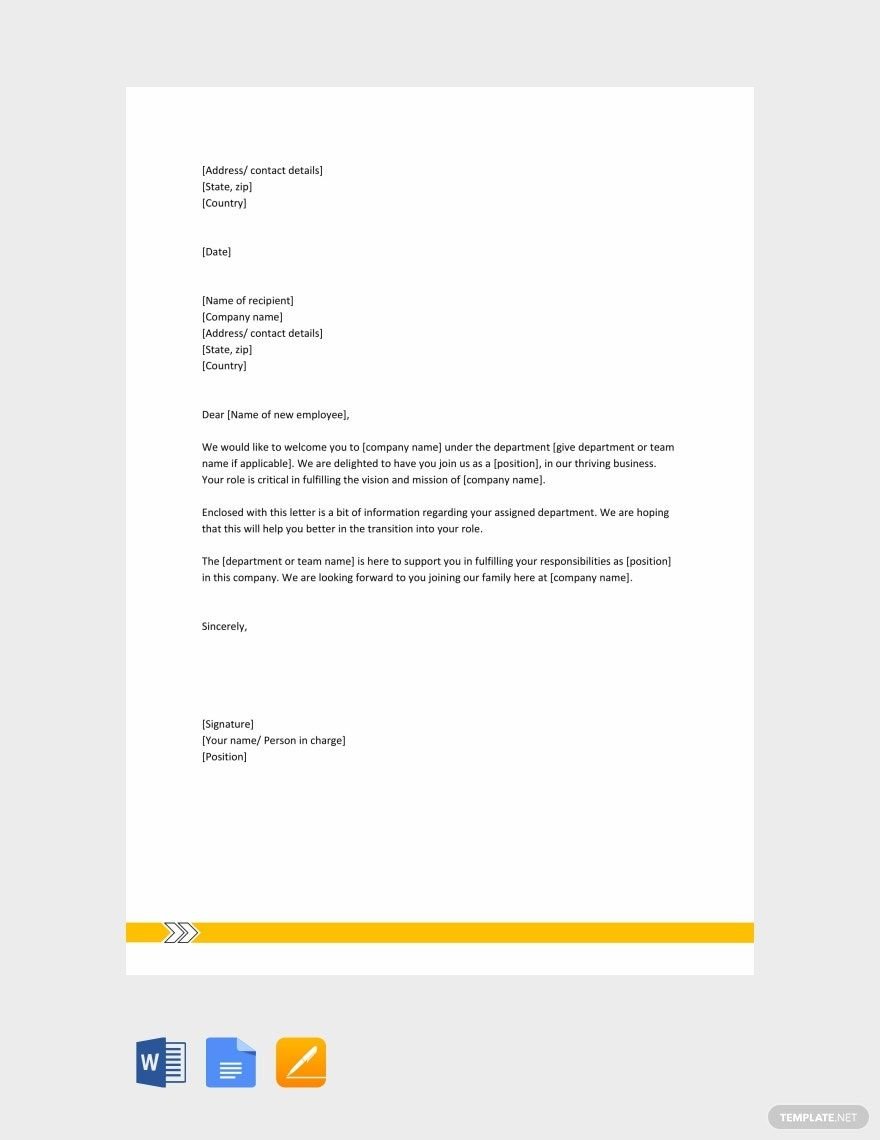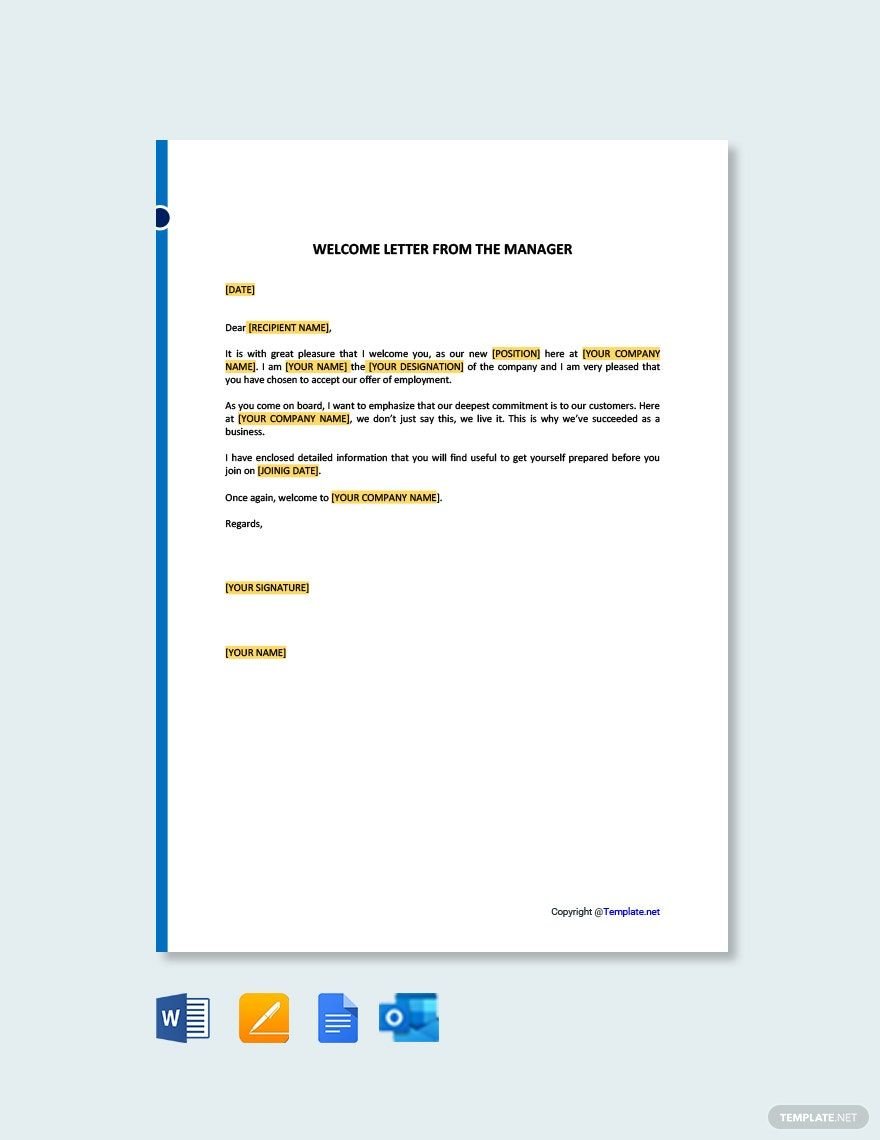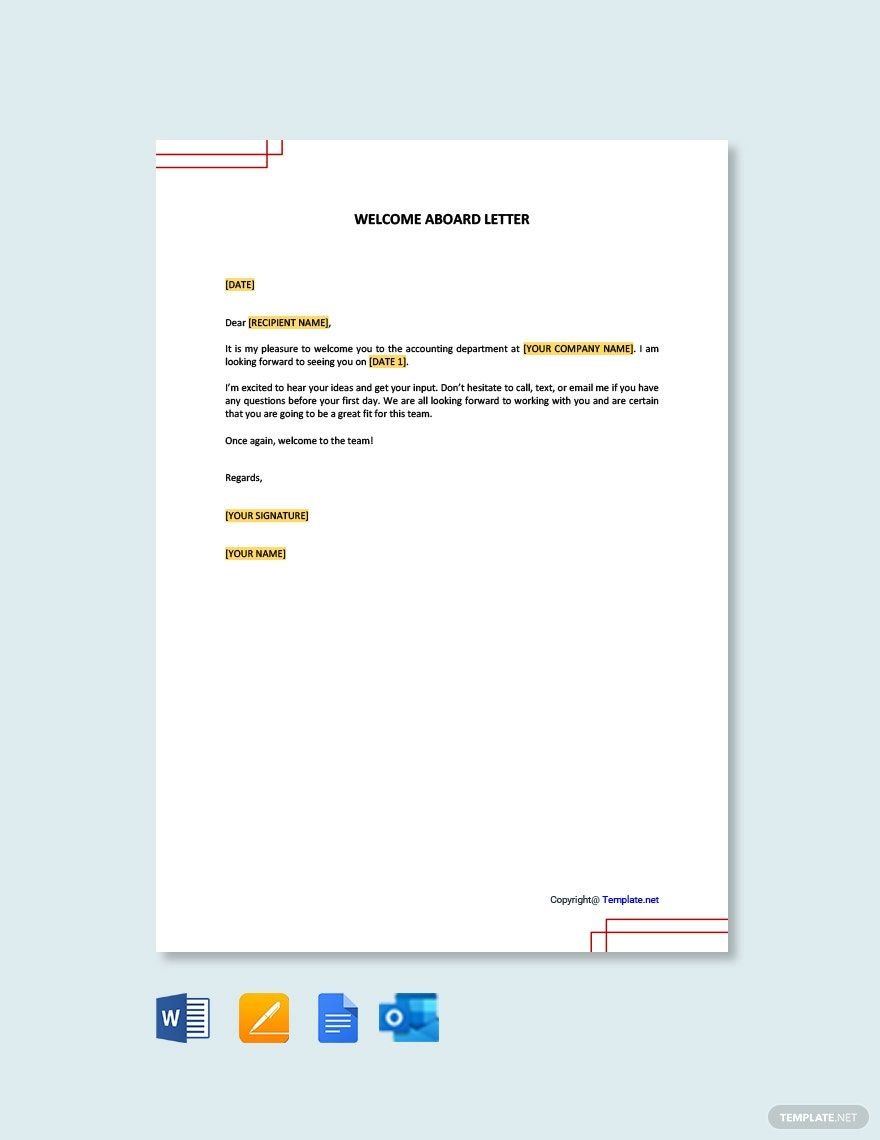Bring Your Communication to Life with Welcome Letter Templates from Template.net
Keep your business communications engaging, professional, and inviting with Welcome Letter Templates from Template.net. These templates are perfect for HR professionals looking to onboard new employees smoothly or small business owners aiming to establish a friendly rapport with their new clients. With our Welcome Letter Templates, you can announce a warm welcome to new team members or introduce a new service to your existing client base with elegance and ease. Each template is meticulously designed to feature key details like a company logo, contact information, or a friendly introduction message. No design skills are required to personalize them, and you can achieve a professional-grade look with minimal effort. With customizable layouts compatible with both print and digital distribution, you can save time and ensure consistency across all your communication channels.
Discover the many Welcome Letter Templates we have on hand, each designed to fit a variety of scenarios. Start by selecting a template that suits your purpose. Easily swap in your logo and update text to make it personal, or tweak colors and fonts to match your brand identity. For those looking for a bit more flair, drag-and-drop icons and graphics into place or add animated effects to capture the attention of your reader. The process is intuitive and skill-free, allowing you to explore the endless possibilities these templates offer. With regularly updated templates available, you'll always have fresh designs to choose from. When you’re finished customizing, you can effortlessly download your welcome letter or share it instantly via print, email, or a sharable link, ensuring that your message is conveyed through ideal channels. The collaborative feature also enables real-time input from team members, making Template.net's Welcome Letter Templates a must-have for any organization looking to enhance its communication strategy.
